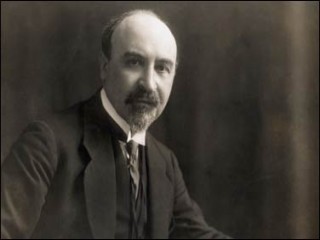
Baekeland Leo biography
Date of birth : 1863-11-14
Date of death : 1944-02-23
Birthplace : Ghent, Belgium
Nationality : Belgian
Category : Arhitecture and Engineering
Last modified : 2010-05-20
Credited as : Chemist and inventor of Bakelite, Velox photographic paper, Franklin Medal
Inventing a material used in nearly every imaginable industry in the early to mid 1900s, Leo Baekeland never gave up his dream of creating a moldable polymer that would keep its form after it cooled. His invention was the first time plastic or Bakelite, as it was known, would be used, mass marketed, and used to make the outer casings of such objects as radios, seats, and even toys.
Born in Belgium to a lower, middle-class family, Leo Baekeland would study at the University of Ghent in 1882 and eventually graduate with a doctorate in natural science at the age of 21. He taught there for several years before he traveled on a scholarship to the United States. Once in the United States, he decided he wanted to reside there, so he obtained a job as a scientist for a company and began his work in American industry.
Leo started working on better photographic paper. He wanted to find something more durable, less flammable, and a paper where the pictures developed on them were sharper. He did so well in the beginning that he started a company called Nepera Chemical Company while creating a special paper called Velox. Within two years, Kodak, which was known as Eastman Kodak, purchased the rights to Baekeland’s discovery for over one million dollars.
Being the inventor at heart that he was, Baekeland opened up his own research laboratory in his backyard in New York. He worked day and night at creating a material that would perform like shellac, which was a natural residue that was used as a plastic. By mixing formaldehyde and phenolic solutions, he came up with Bakelite. The secret was that at a high temperature and pressure, the resulting material would hold its form, even under high heat.
Leo Baekeland soon patented his material, formed Baekeland Industries, and began marketing it in various industrial fields. Through Baekeland’s work, industry now knew that science could work together to better the materials used, no matter what the industry. Baekeland’s work created lighter, safer, and better materials that we still use today. Whether we are listing to a radio, driving down the road, or drinking from our plastic bottles, we can thank a man who had the foresight and forthright to pursue what he dreamed was possible.
Baekeland was awarded the Franklin Medal in 1940.
















